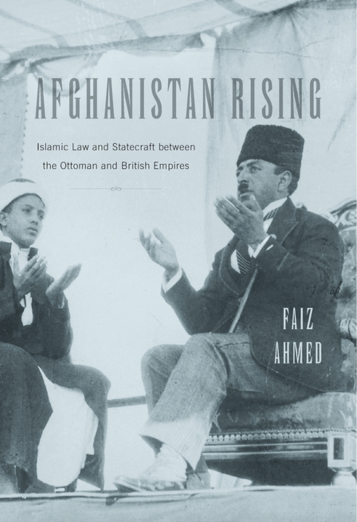The Individual and the International: An Interview with Dr. Michele L. Louro

SEAN PHILLIPS: Could you tell us about your intellectual journey? What drew you to write about interwar internationalism and India’s stake in it, and in particular, Nehru’s view of it? Were there any particularly inspiring tutors or texts which lured you in?
MICHELE LOURO: This project really began with an inspiring mentor and began with a text that I was intrigued by. I had received a bachelor's degree in psychology and had dreams of being a clinical psychologist, but I wasn't particularly happy researching in the field of psychology and hadn't quite figured out why. In 2003, I decided to change direction and began a Master's degree in history at Miami University (in Oxford, Ohio) which is not really a typical path to academia in the United States. Judith P. Zinsser who is a world historian took me on as a student and really helped my transition from psychology to the humanities. She suggested that I read Jawaharlal Nehru’s Glimpses of World History, which was published in 1934, written whilst he was in prison during the civil disobedience movement 1930-1934. I was really struck by the fact that much of the scholarship was really focused on his much later work, Discovery of India (1946) and what he wrote about the history of the Indian nation. Few historians had really tackled his chronicle, Glimpses of World History (1934), which is a work of one thousand pages in the form of letters to his daughter. I was also struck by why such an iconic nationalist figure and leader chose to write a work of world history as his first major book. That's really where my journey began—it was trying to answer this question: why the "world" rather than the nation was the subject of his first book and what the "world" meant to Nehru. I was also troubled by the assumption that his world history was simply a copy of H.G. Wells’s Outline of World History with an addition of further Indian context. My close reading suggested otherwise very early on. Instead, I came to learn that he was at the League Against Imperialism meetings in the years immediately preceding the years he wrote this text, so I began to think more critically about the international world that Nehru himself was engaged in and also what these experiences had done to shape his ideas about both India and the world he imagined. In thinking this through, I was really lucky to start my PhD at Temple University because I worked with a scholar, Howard Spodek, who was trained in world history and South Asian history. I also worked with Richard Immerman who trained me in international history, history, and Lynn Hollen Lees at Pennsylvania University who trained me in British imperial history. I was lucky to be able to think about this topic from a variety of different sub-fields therefore, pulling these all together to form a better understanding of Nehru and the world he was writing about.
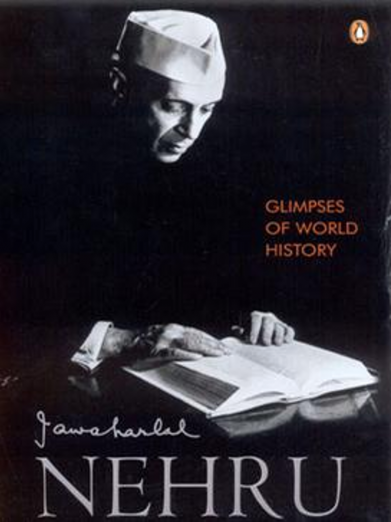
SP: For those unfamiliar with your work, can you briefly outline what Comrades Against Imperialism is all about? What are its core arguments and what are some of the key interventions you wanted to make?
ML: The book uses Nehru's life as a lens for understanding the interplay between interwar world and Indian nationalism, reflecting on how these phenomena are deeply interconnected, and how they mutually shape one another. The book is situated between the world wars and it’s really a lens through which to try to understand a global history of anti-imperialism as well as anti fascism—a topic that became increasingly important later in my research for the project. At large, it explores a cohort of comrades who became drawn to anti-imperialism and anti-fascism by the 1930s, so I use their experience and reflections as a case study through which to push beyond conventional histories of anti-colonialism, which is mostly framed in terms of locality and nation, rather than how it considered and engaged developments in the wider world. Even imperial histories are quite insular. You have a lot of histories which had really concentrated upon the metropole and the colony and their relationship. Some works explore links between the Metropole and several colonies, but rarely do you see empires interacting with one another or an exploration of the ways in which different internationalisms interacted with empires and colonies. A focus on Nehru enabled me to ground all these different kinds of global connections within one story. It's also a story about the inter-war world as being complex, fluid, heterogenous and ideologically flexible. It's easy for us to look back at the interwar moment from the vantage point of the Cold War and beyond and to place more contemporary categories onto these interwar actors after the Second World War—to place our own categories onto these actors in ways which they wouldn't have understood or saw themselves. The book recovers the interwar world on its own terms.
Some of the other interventions that are important here include reflections upon archival sources and attempts to broaden the ways in which we study global history beyond one or two archives in one or two countries. Global and multi-archival research can be challenging. The archives in India were the basis and the start of these explorations and I spent a year there as part of a Fulbright scholarship. I also worked at archives in the United Kingdom and was fortunate to make use of archives in the United States that were located fairly close to where I was based. I also used archives in the Netherlands, whilst there were documents from German and Russian archives that had recently been digitized and available in the United States. Really, it was a fortunate moment to start this work because a lot of archives had begun to open in the late 90s and early 2000s, which allowed me to tell a much richer story. When I started thinking about the significance of the League Against Imperialism for the first time as a Master’s student, this is really where I thought: amazing; this is exactly what historians dream of—an institution that very few people have written about. But this was an institution based in Berlin and the institutional archive there was essentially destroyed by the Nazi regime in the early 1930s. This presented a real challenge, so telling the story of that institution would always mean finding small collections in all of these larger repositories around the world would prove a real challenge.
Overall, the outline of the book is fairly straightforward. It's got two chapters on the League Against Imperialism (LAI) based around Nehru’s encounters and the comrades he meets while working within the institution. The third chapter talks about the concrete ways that internationalism came to be embedded in the Indian nationalist movement, first in Nehru’s own ideas, where he worked, I think, fairly successfully in institutionalizing some of those ideas into the thinking of the Indian National Congress at large. The final chapters on the 1930s look at the complicated afterlife of anti-imperialism and Nehru’s ideas—particularly the ways in which many of his comrades came to subscribe to anti-fascism as an interrelated extension of the anti-imperialist agenda. Thereafter, it traces some of the afterlives of these stories into the post-1945 period, but this is something I hope to research more in the future.
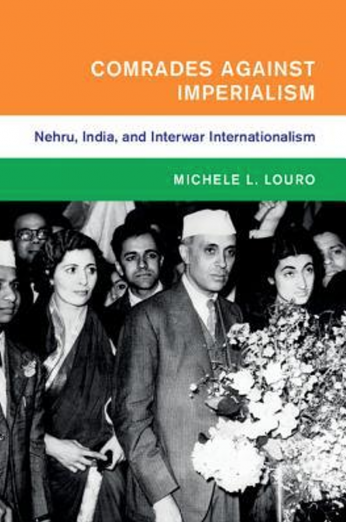
SP: You clarify that Comrades Against Imperialism shouldn’t be regarded as a biography of Nehru, per se, but that you use his story and his writings as a guide, given he's such an extraordinary and well-travelled character that is able to both operate and imagine himself within all these different worlds. I wonder if you had any reflections about biography or using particular actors as a way of writing global history? Could it only have been Nehru through which you could have written this particular history?
ML: This is a great question, and one I have considered since the beginning of this project. As a graduate student, many scholars encouraged me to write a biography, although this was never my interest. I wanted to use Nehru as a lens for understanding the world in which he lived. There are perhaps too many biographies of nationalist leaders in India, although there are many, many more books about Gandhi than Nehru. When Nehru does appear in most biographies it's really all of a sudden in 1947, almost out of nowhere, without there being a deeper understanding of his nationalist activities and of the interwar world which shaped him. I found that quite frustrating. So at large, contextualising Nehru’s life in the 1920s and 30s—even in India itself—became a critical intervention period. At the same time, I wanted to keep the story tied to the international. I wanted to explore what internationalism meant to Nehru in the 1920s. After all, the story begins in 1927 at a critical period following the Great War, after the Bolshevik Revolution yet before the ‘Stalinization’ of the Communist movement. It's before the global depression. It's before the Second World War, even the eventual threat of fascism. It's this really pivotal moment that we are still attempting to fully understand as historians. How did activists like Nehru forge international solidarity across the left with a focus on anti-imperialism and anti-fascism at this critical moment? The rich stories in this book enable us to rethink interwar histories of the left and the colonial world, as well as what is happening today as clashes between fascism and anti-fascism, right and left, reemerge as a central part of global politics.
Inevitably, the other major critique of this type of biographical research is that it focuses on elites and official archives of the colonial and postcolonial states. My take however was that we have to understand elites and state-makers as well as those histories ‘from below’. I also thought that by telling the story through these archives around the world, I was also problematizing the official archive a little, situating the official archives in India in relation to other archives—that could be other state archives, or archives that tracked subversive Indian revolutionaries by colonial intelligence agencies. The book offers a reading of the limits of the official archive while also thinking about how histories can enrich the past through multi-archival research.
On the question as to whether a global history of anti-imperialism spanning the interwar and early Cold War years could have been written through somebody else? When I began researching Nehru and the LAI, I probably would have had a different answer. Nehru was just so exceptional in the way his commitment to nationalism and internationalism overlapped. Yet, I realized more recently that he was emblematic rather than exceptional. This is thanks to my recent work as co-editor of a new book, The League Against Imperialism: Lives and Afterlives (Leiden University Press, 2020), a volume co-edited with Carolien Stolte, Heather Streets-Salter, and Sana Tannoury-Karam. It’s a history of the League Against Imperialism told through different individuals, institutions, and ideas. The contributors are a phenomenal group of internationally-based scholars working in different archives around the world in different languages, all telling a critical dimension to the LAI’s global history. The project began when someone asked me what I was going to do for my second project and Sana said to me: “tell me, you're going to write the definitive book on the League Against Imperialism.” I remember saying... “I can't do that. I don't have the languages to tell the most complete and comprehensive global story that needs to be told for an institution like this.” In response, we convened a group of scholars to tell the story. Through this project, I learned that Nehru wasn’t all that unique. In rethinking his pattern of anti-imperialism and anti-fascism and the different sort of campaigns that show up in my book, you can find those same patterns and narratives in the lives of many activists in the ’20s and ’30s. Comrades anchored the global story of anti-imperialism in Nehru’s life and work, but I do think that there is a lot of opportunity to think about other figures, and even other institutions, that can reveal similarities and overlapping histories of internationalism. I hope my book encourages others to consider new sources and perspectives of the transnational lives of interwar leftists that can be told through global intellectual history or global institutional history.
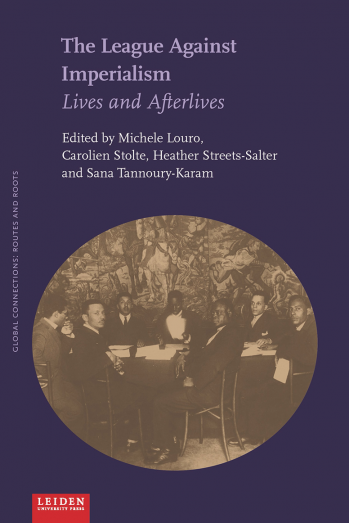
SP: I just wanted to ask a little bit about how you talk about yourself as a researcher and whether you would say that you're a practitioner of global history?
ML: I've gotten this question a few times. Are you a global historian? Are you comfortable with that label? It's an intellectual identity, I suppose. I think I've accepted a few things: I’m a global historian, a world historian, and an international historian. The series Comrades Against Imperialism was published in ‘Global and International History,’ so in placing it, in this sense I didn't have to decide. That said, I'm comfortable with global history. I think what troubles me a bit about the current state of history is the intellectual division between international, global, world, and transnational history. These divisions often mean that scholars aren't speaking regularly enough to one another, debating or unpacking their ideas, their arguments and the historiographies they're creating. Rather, such cross-disciplinary conversations could enrich our thinking about the world and its past. I’d encourage global historians to think more inclusively, as a group of scholars who are working beyond historiographical silos and engaged in dialogue with international, transnational, and world historians. Comrades Against Imperialism would not have been possible without a deep engagement from people who identify as global, world, and international historians, as well as scholars of South Asian history. It helped me grapple with transnational flows, interstate diplomacy, and imperialism within a single framework. In bringing the sub-fields together, it enriched my understanding of the world in the 1920s and 1930s.
More broadly, I would say that I think global history is really a way of thinking beyond historical categories—particularly categories of the state and of the nation. It allows us to think about the possibilities and limits of thinking globally in our own times. I often use internationalism and international as keywords for my own work, mostly as my actors use that term, but I think they used internationalism to think globally, or at least in the way that we conceptualize it as historians today. Methodologically, global history produces a different set of questions and examines multiple archives, within and beyond the nation and state.
SP: To that end, I wondered what your relationship was with Indian history or as a historian of South Asia? How does an area studies approach inform your work?
ML: I’ve always moved easier within the circles of world and global historians. There have been instances where it’s been questioned whether I was really a South Asian historian, but I was actually trained as one. I was fortunate that when I began my doctoral training and early research for this book, scholars like Mrinalini Sinha and Sugata Bose were publishing really exciting scholarship on the interconnections between India and the wider world. It was in this historiographical moment that I was able to pursue research on a project that was as global as it was grounded in South Asian history. At the same time, I experienced lots of push back from editors who read early iterations of my book proposal, many that questioned my grounding in South Asia’s local and regional contexts. Since the book has been published, however, I have found a welcome reception among my colleagues in the field of South Asian history. This is especially true since more exciting scholarship on India and the interwar world, by colleagues like Ali Raza and Carolien Stolte, continue to shape the field.
Recently, I've taken on the role of President of the Society for Advancing the History of South Asia, a position that has provided new opportunities to connect with colleagues in the field of South Asian history.
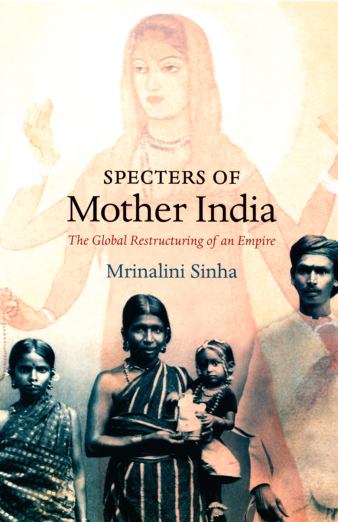
I think it’s important to say that when you write histories that can’t be confined to a single sub-field or category, you are likely doing the much-needed scholarship and thinking that our discipline requires. To present the past on its own terms, you often have to transcend the epistemological categories of the historical discipline in our times. That is the exciting part about the global histories of the interwar period, which was messy. Activists regularly transcended the very categories that we use to analyze the past. This can be isolating for a graduate student or junior scholar who feels that their work doesn’t fit neatly in the sub-fields and silos within the historical discipline. Despite this, the lesson, especially for graduate students and junior scholars, is that if you don't feel like you fit, maybe you're contributing new insights that advance our understanding of the past in ways that will shape the field.
SP: Reflecting more widely on your approach, I wondered how we might go about doing these types of histories—whether you're a tenured academic at a well-financed institution or whether you’re a graduate student with just a year or two and a limited budget?
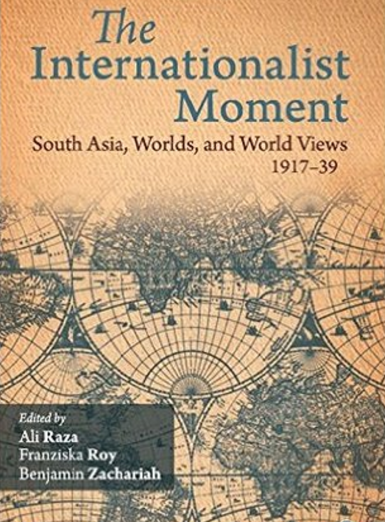
ML: I work at a teaching-intensive institution. While I have tenure as an Associate Professor, I am still responsible for teaching four classes each semester. I cannot take leaves or reduced course loads in order to research or write. So, my biggest piece of advice is to find people to collaborate with. When I was in the archives in New Delhi, I met a colleague in the lobby who stopped me and asked: “What are you working on? You're pulling the same files.” It was my first sort of encounter with someone also working on interwar internationalism from a South Asian perspective, and it ended up being Carolien Stolte who's at Leiden University. We learned then that we had these overlapping interests, which began a really important conversation for our respective projects and culminated in several collaborative projects, most recently League against Imperialism. I also worked collaboratively with Ali Raza (author of the recently published Revolutionary Pasts), Franziska Roy, and Ben Zachariah on many collaborative projects early on. Together, we published an edited volume called The Internationalist Moment, which came out in 2013. We also put together a special issue on the Meerut Conspiracy Case in the same year, so we have these projects that we wrote together and thought about together. I don't think I would have written the book that I did, had I not encountered Stolte and others, who helped me think through the complexity of interwar internationalism and South Asia history. Collaboration is central to my scholarship.
Collaboration is central to my scholarship.
SP: Could you tell us a little about your latest research?
ML: Initially, I wanted to write a book on Nehru after 1947, but I wasn't yet ready to leave the interwar period. I ultimately decided to work on a new book project called the Red Scare Comes to India: The Meerut Trial and Its Aftermath. The Meerut Trial itself shows up in Chapter Four of Comrades Against Imperialism but I had to cut a lot I had written about it. Many questions about the trial remained, and I am diving into a book-length project on Meerut. In short, the Meerut Conspiracy Case was a set of legal proceedings, launched in 1929 in colonial India, in which the British Empire sought to counter the spread of international Communism to Colonial India. Thirty-two suspected Communists went on trial in India for conspiring with the Communist International, whilst the trial includes sixty-three organizations and individuals from outside India who were also ‘conspiring’ in fostering communism—many of whom had never stepped foot in India before. It's really in this ‘conspiracy case’, where we see the British Empire begin to see communism rather than anti-colonial nationalism as its chief antithesis. It's a shift. I'm also interested in looking at the international protests around the trial which took place in locations such as Cleveland, Ohio, New York, London and Berlin, whilst the Communists International was writing a lot about the trial itself. That being said, few have written anything about this particular trial, and what does exist is outdated given the opening of many new archives in recent decades. It seems to me that it's an event in India that inspired transnational protests worldwide over British imperialism, capitalism and the world system, inspired by International Communism. There's a global story about anti-communism to be told here, too, but also a story about how the British Empire strengthened their ties with other empires, including the United States. There’s also a story about the defendants themselves, and the ways in which the colonial state used ‘conspiracy’ to eradicate, or to silence and confine, more radical anti-colonial activists and their ideas.
SP: As a final question, what do you currently have on your pile of reading, or is there something that you would recommend to a new graduate student of global history to help shape the way they might think about and approach the past?
ML: Recently I've been really thinking a lot about law and about legal trials as spaces of power and protest. I happened to read Faiz Ahmed’s, Afghanistan Rising, which was the John F. Richards Prize winner at the American Historical Association in 2018. I chaired the roundtable on the book in early 2019. It's about Afghanistan's first legal constitution in the early 20th century. It does a few things which I find really inspiring: it challenges certain myths about Afghanistan as a failed state, chronicling how it doesn't really fit into any sort of regional space, noting that outside of the Ottoman Empire, this was the only Muslim state that had its own legal constitution in this period. Ahmed then widens the frame and looks at the ways in which British imperial and Ottoman lawyers and officials shaped its constitutional development, really telling us a transnational and transimperial story in the early 20th century that pushes back against many myths concerning Afghanistan. It has helped me to think about how law and legal trials can be studied beyond conventional narratives of how the colonial state creates laws to divide and suppress, or through the creation of knowledge that controls the colonized. I don't necessarily disagree with any of these critiques, but the ways in which we can think about the broader global implications of law makes this particular book a really interesting reading. Equally important, it does the kind of global historical work that is paramount for our field: it transcends the dominant categories applied to histories of the twentieth century world, and in this case Afghanistan as well.
